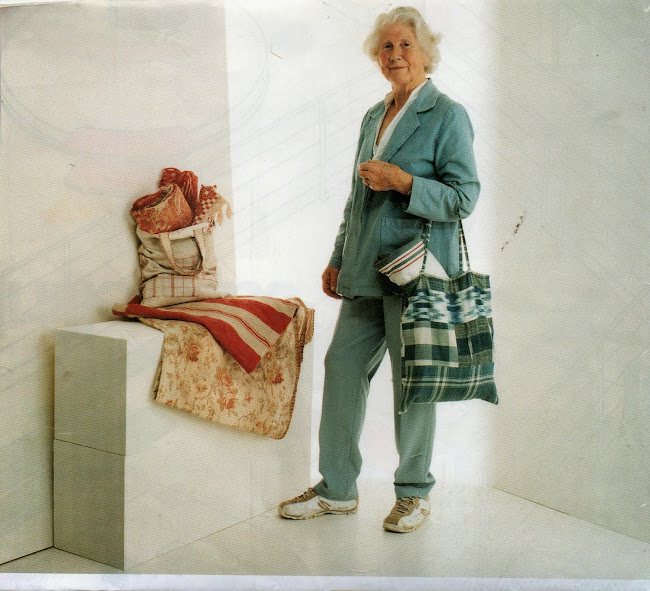The scallops and edges were often trimmed with a bright red piping or border, which gives a very attractive finish
 The old French linen and hemp coloured bedding materials are now rare but worth searching for as they are so attractive and can be used in many 'recycled' ways. Most are blue and white - natural linen interwoven with indigo blue or woad-dyed threads - the most eagerly sought are the flamme, where natural white linen is tie-dyed and then placed in the loom in a regular pattern, but because this cannot be completely accurate, you get the beautiful ikat weave, with flame-like outlines at regular intervals. This was often known as 'Siamoise' as it was copied from the ikat weaves of that country and a lot of small factories in France were able to copy the techniques, so almost every example I have had and sold is in a different scale and pattern. The cotton used is very fine so it is quite difficult to get large pieces in good condition and most of mine ended up as cushions or tote bags.
The old French linen and hemp coloured bedding materials are now rare but worth searching for as they are so attractive and can be used in many 'recycled' ways. Most are blue and white - natural linen interwoven with indigo blue or woad-dyed threads - the most eagerly sought are the flamme, where natural white linen is tie-dyed and then placed in the loom in a regular pattern, but because this cannot be completely accurate, you get the beautiful ikat weave, with flame-like outlines at regular intervals. This was often known as 'Siamoise' as it was copied from the ikat weaves of that country and a lot of small factories in France were able to copy the techniques, so almost every example I have had and sold is in a different scale and pattern. The cotton used is very fine so it is quite difficult to get large pieces in good condition and most of mine ended up as cushions or tote bags.Other materials were all kinds of checks and stripes in wide patterns sometimes quite coarse and thick, and these were used to make mattress covers, or drapes hung from a simple pole above a bed placed sideways against a wall. You may not know that in early times the roof was often not plastered on the inside, so apart from the cold that came down, there was a continuous rain of dust and debris from birds, bats and other rodents which might drop on your head, so the overhead protection was rather essential.




No comments:
Post a Comment